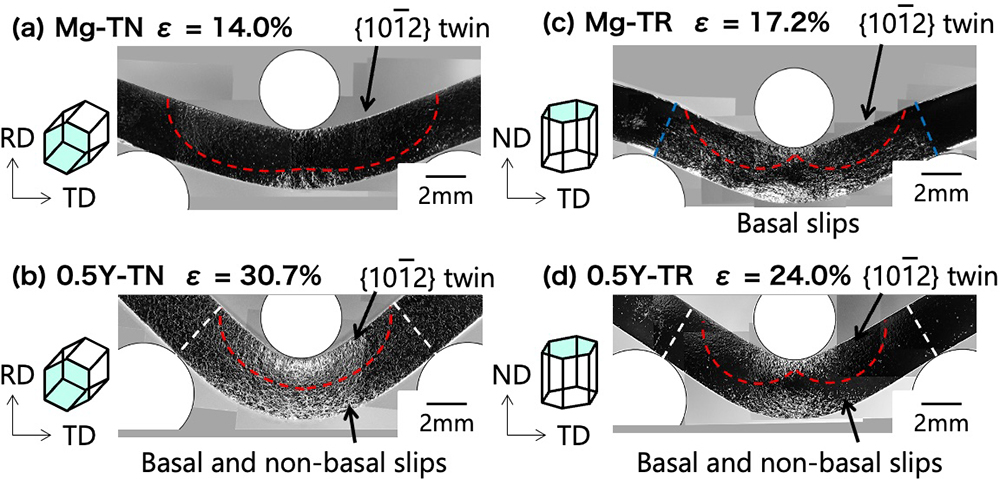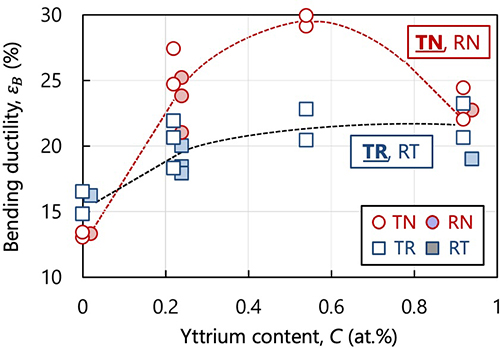Metallurgical Abstracts on Light Metals and Alloys vol.57
Effects of Yttrium Addition on Bending Deformation Behavior of Magnesium
Takaya Fujihara*, Kenta Oka*, Masayuki Tsushida*, Hiromoto Kitahara* and Shinji Ando*
* Kumamoto University
[Published in Materials Transactions, Vol. 65, No. 6 (2023) pp. 621-628]
https://doi.org/10.2320/matertrans.MT-M2023152
E-mail: Shinji[at]msre.kumamoto-u.ac.jp
Key Words: Basal slip, Non-basal slip, {1012} twin, Neutral plane
Pure magnesium and Mg-(0.2–0.9 at%) Y rolled sheets were subjected to three-point bending tests to individually investigate the effects of texture and yttrium addition on bending deformation behavior. Yttrium addition increased bending yield stress in both Specimen TR with the neutral plane parallel to the ND (normal direction of the rolled sheets) plane and Specimen TN with the neutral plane perpendicular to the ND plane, resulting from the increase in critical resolved shear stresses (CRSSs) for basal slip and {1012} twinning with yttrium addition. Bending ductility increased with increasing yttrium addition until 0.5 at% yttrium addition, and then decreased at 0.9 at% yttrium addition in Specimen TN. On the other hand, bending ductility increased until 0.9 at% yttrium addition in Specimen TR since non-basal slip activities increased with increasing yttrium addition. Since the neutral plane in Specimen TN with 0.9at% yttrium addition moved more to the center than that in Specimen TN with 0.5 at% yttrium addition, resulting in the higher tensile strain at the tension side. Therefore, the bending ductility in 0.9 at% yttrium addition was lower than that in 0.5 at% yttrium addition.


(Left) Optical micrographs of pure magnesium ((a) and (c)) and 0.5Y ((b) and (d)) after bending test. Mg-0.5Y showed enhanced bendability by activating non-basal slips in the tension side.
(Right) Relationship between bending ductility and yttrium content. The bending ductility of magnesium increased with increasing yttrium contents and showed orientation dependence.
